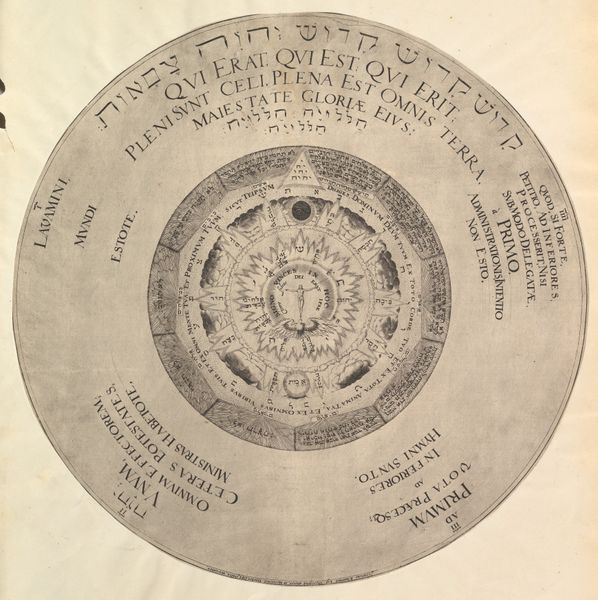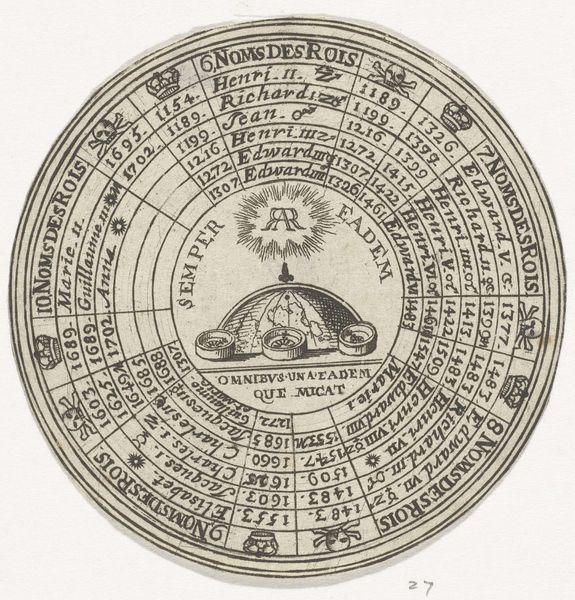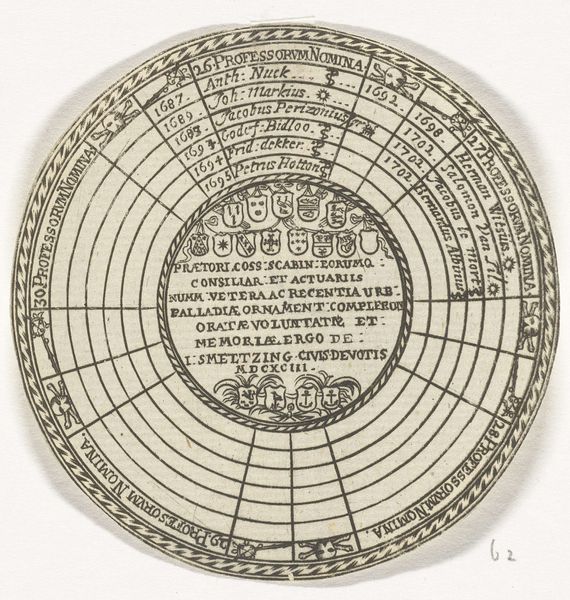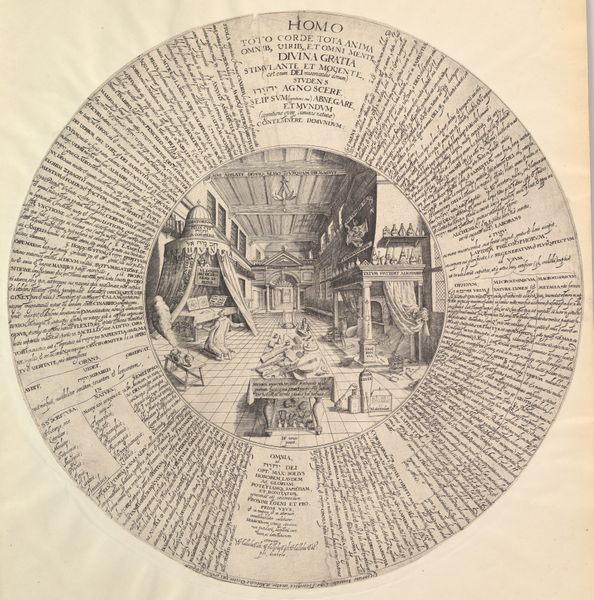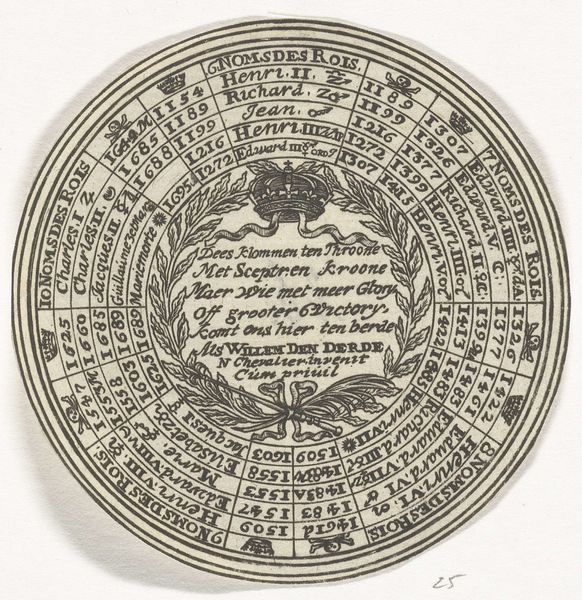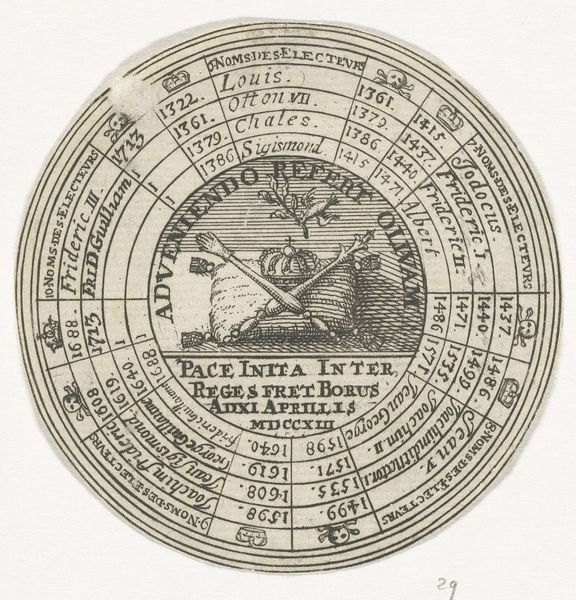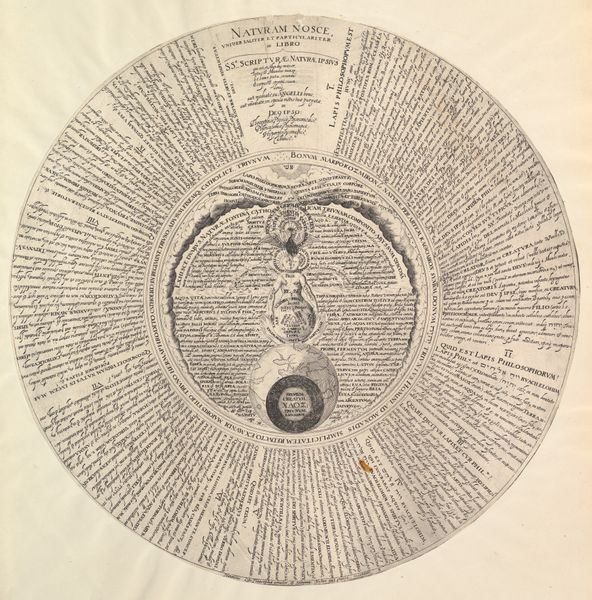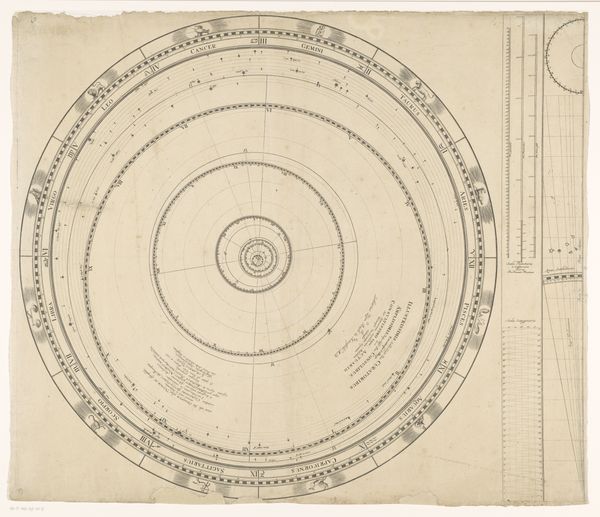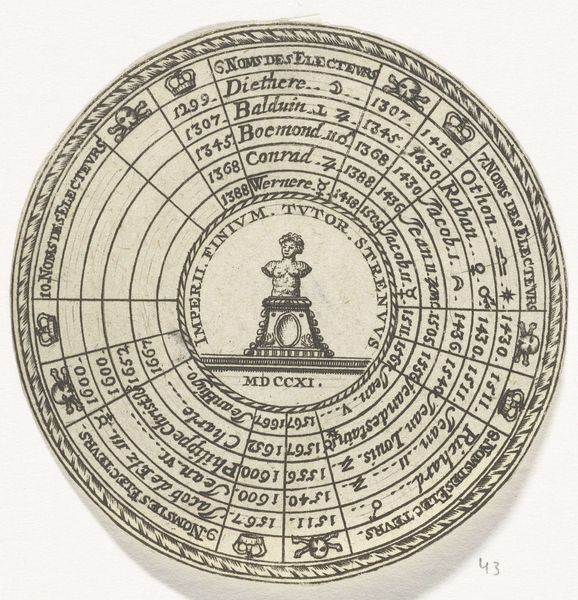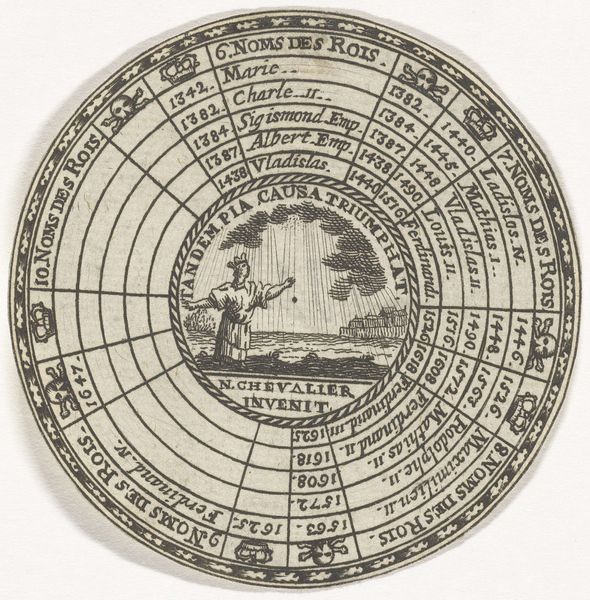
Syzygy or the Conjunction of the Macrocosmic Unity with the Microcosmic Triunity from Heinrich Khunrath, Amphiteatrum sapientiae aeternae 1535 - 1611
0:00
0:00
Dimensions: sheet: diameter 16 in. (40.6 cm)
Copyright: Public Domain
Editor: This artwork, "Syzygy or the Conjunction of the Macrocosmic Unity with the Microcosmic Triunity," dates from sometime between 1535 and 1611. It's an engraving – quite a complex one. I find it rather overwhelming with all its detail. What catches your eye in this piece? Curator: Immediately, the intense labor invested in its production. Look at the precision of the engraving! This wasn't just about artistic inspiration, but about highly skilled labor. Who was producing prints like these, under what conditions, and for what market? That’s where the true meaning lies. How would this object be consumed? Editor: So, you are interested in where the art came from and who it was made for. Curator: Exactly. Consider the material itself: an engraved print. It is reproducible, intended for dissemination. The text, the symbols... they were meant to communicate to a specific audience, perhaps a learned, wealthy elite, privy to esoteric knowledge. Was this distributed widely, or held privately? The means of production and potential social reach matter. Editor: That's interesting, I was focusing on trying to decipher the symbolism. You are pushing me to consider a materialist approach to understanding artmaking. Curator: Precisely. We have to see the materials, processes, and social contexts as central to the artwork's very being, not just window dressing to some abstract "idea." This changes our perspective, does it not? What have you taken from our conversation today? Editor: Well, I will definitely spend more time trying to look at prints, drawings, and engravings in terms of what the artistic choices say about access to art, and less on deciphering their aesthetic intent, to get a better idea about why something looks the way it does. Thanks for expanding my vision.
Comments
No comments
Be the first to comment and join the conversation on the ultimate creative platform.
